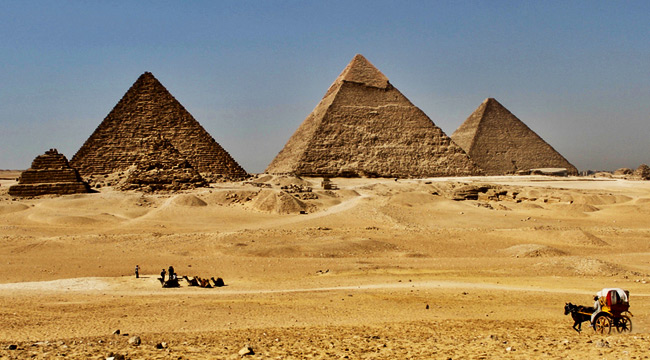
Egypt’s Great Pyramid has fascinated scientists and pop culture fans alike for centuries. But it was also thought to have largely given up its secrets. It seems, however, that the sole remaining wonder of the original seven holds more secrets than we thought. And this discovery was found in a way that would thrill a basic cable documentary producer — by using radiation from space. Here’s more of what was revealed:
- To be specific, the revelation refers to the Great Pyramid of Giza: The final resting place of Khufu, the Great Pyramid is the biggest of the three pyramids we’ve all seen in high school textbooks. To this point, three chambers had been found: The King’s Chamber, the Queen’s Chamber, and an unfinished chamber cut into the bedrock underneath the pyramid. There’s a long hallway called the Grand Gallery that leads to the King’s Chamber, over which scientists discovered the void.
- The scientists, from Cairo University and the Heritage Innovation Preservation Institute, used cosmic rays, specifically muons: Muons are tiny subatomic particles that flood our atmosphere all the time, and they’re useful in this case because stone and air absorb muons differently. So, as you check the absorption of muons, you can find pockets of air inside stone. That’s how they found this hidden space.
- What’s in it? Nobody knows yet, and may not for a while: As you might have guessed, the Egyptian government is rather picky about who and what gets to poke around one of the single most valuable archaeological heritage sites on the planet. Not even the scientists who discovered it know anything about it beyond its rough dimensions; it could be full of artifacts that tell us vastly more about the time of the Pharaohs, or it could be the second coming of Al Capone’s vault. One thing that is clear is that the space wasn’t intended to be accessible and may not have any real utility. It could simply be there for an architectural purpose.
That said, there are plenty of other unintrusive technologies that can be rolled out to take a look inside the space, and it seems unlikely that archaeologists and Egyptologists won’t at least want to take a look at it. So expect to hear more, much more, about this new hidden space inside the grandest of the pyramids.
(Via Washington Post)






